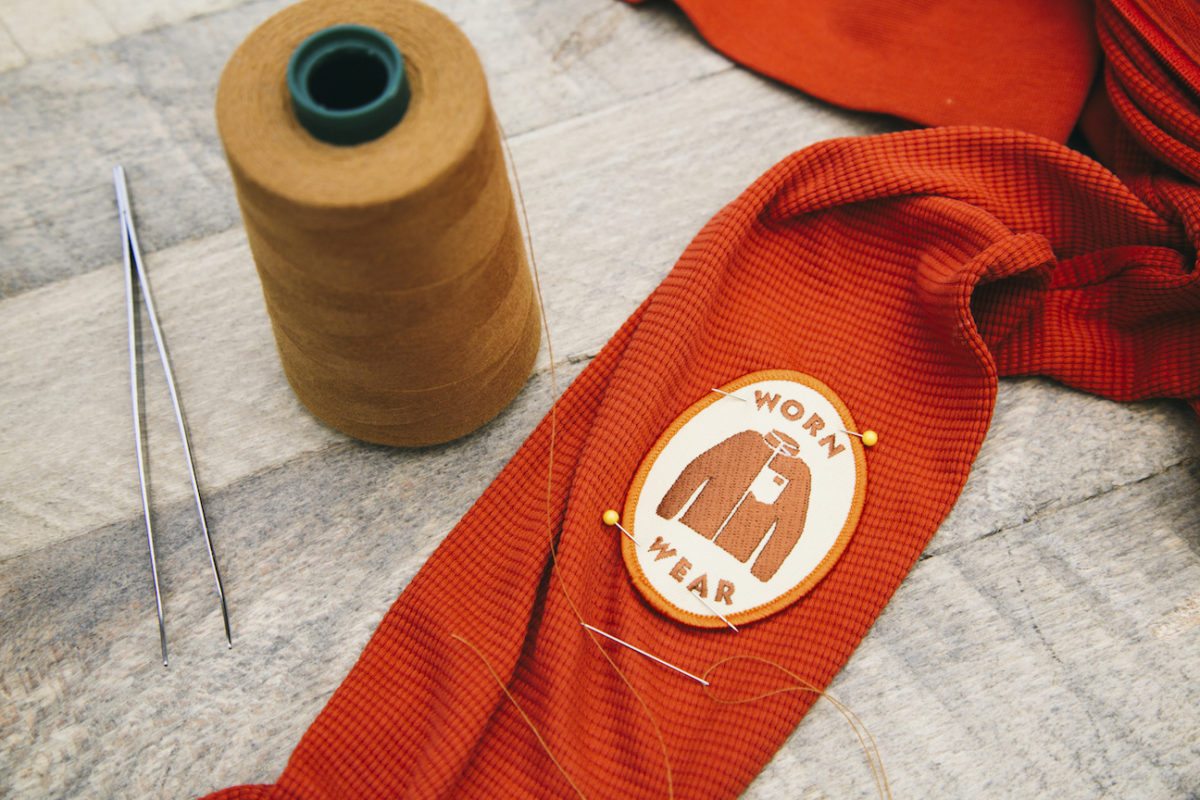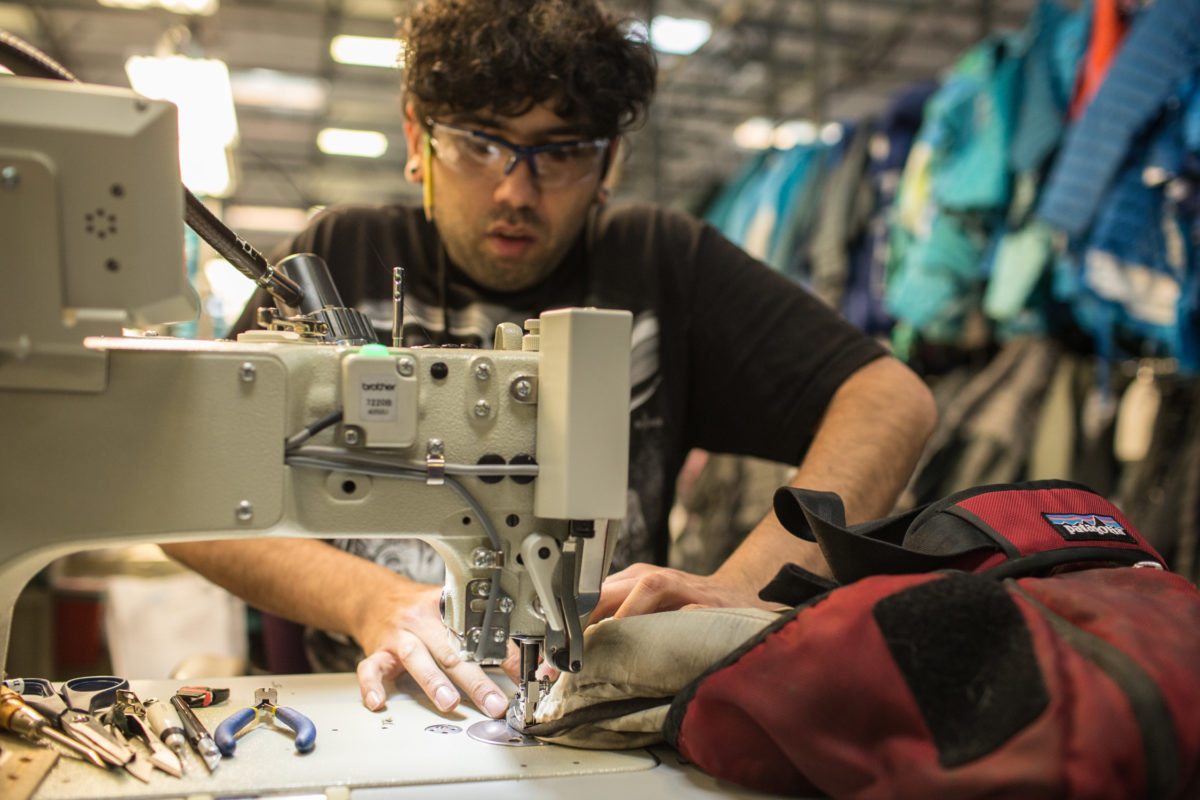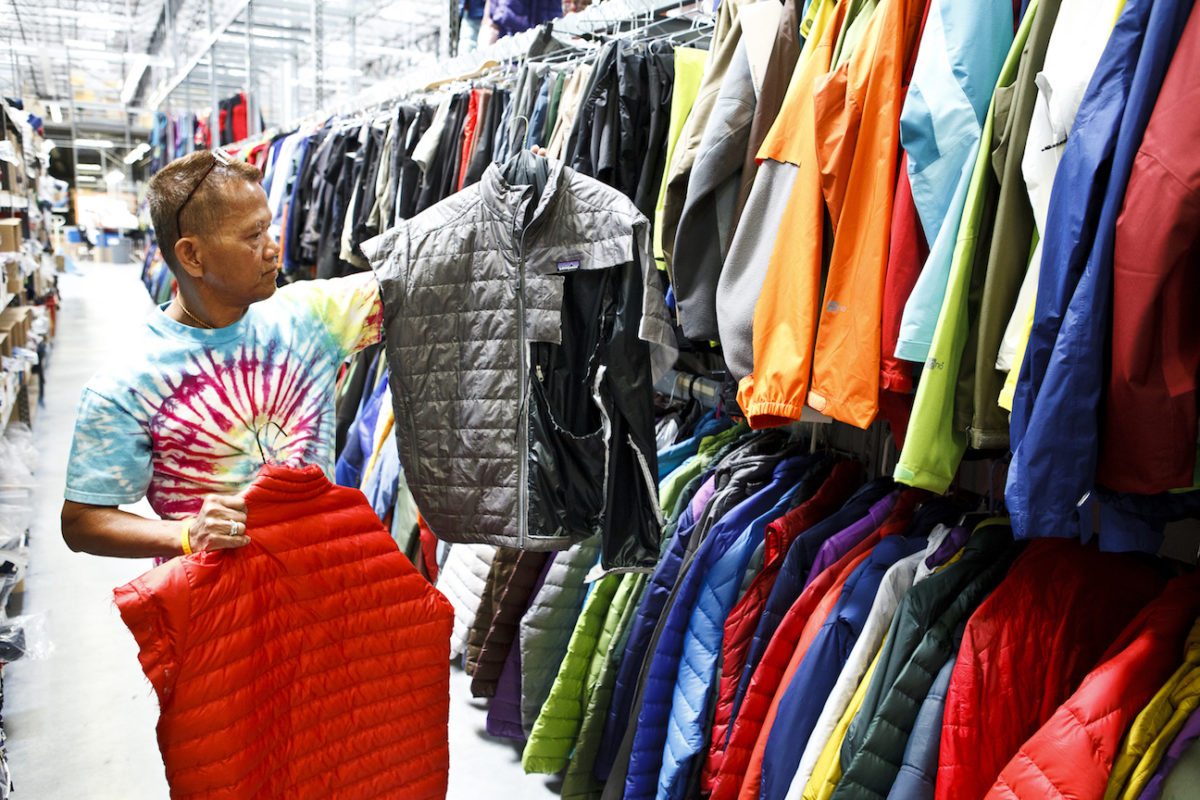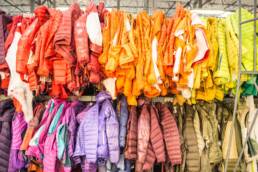Last week we wrote about the Renewal Workshop, an Oregon startup seeking to shake up the apparel industry one blown out zipper at a time. This week we visit Patagonia’s Worn Wear repair facility, which helps our sartorial slacker make peace with her penchant for old gear.
The other day I resigned from my day job. I walked out of the CAO’s office and into the washroom and realized there was a hole worn through the elbow of my shirt. Good time to be returning to freelance life, I thought. At least I can keep wearing it.
The shirt had been part of my work uniform for almost six years, through two different part-time positions, pre-and-post pregnancy – a battle armour of about six pieces that were in constant rotation.

Somewhere in that time period, Barack Obama would endorse dressing the same way every day, to manage his decision fatigue by eliminating pointless decisions, retaining intellectual bandwidth for the important stuff. Minimalists would embrace capsule wardrobes, and design thought leaders would champion wearing a uniform to the studio, instead of squandering all their creative energy on early morning wardrobe decisions.
But it was Patagonia that first gave me permission to be sartorial slacker.
“As individuals, the single best thing we can do for the planet is keep our stuff in use longer and reduce our overall consumption in the process. Worn Wear celebrates the stories we wear, keeps your gear in action longer through repair and recycles your garments when they’re beyond repair.” So reads Patagonia’s “How It Works” page about Worn Wear. Turns out I live the Worn Wear ethos. Now I can cloak myself in eco-righteousness, too.
https://youtu.be/7muOgpX8vaQ?list=PLJQsrK_W2jniRbGH7964cgt7bboyJnoIg
The day I clicked on a video about Patagonia’s Worn Wear Repair Truck and Facility, I was seduced by the real people and the longing and nostalgia an old jacket could hold.
And I was relieved.
They were hefting their brand power behind the idea that you could (and should) have a fave jacket, pair of pants, vest, that is soaked in the stories of your life. That is old. Worn in. Maybe even a little shabby looking.
Because it takes courage to show up in worn in, or almost worn out clothes.
Especially when you live in a resort town. In a land full of people sporting prototypes of next year’s gear, it’s easy to feel behind the trends before they’re even released. When people are spit-and-polished and shining as hard as tomorrow, it’s hard to stand for patina.

Even on a Patagonia media trip I was invited on this winter, to go and visit their repair facility, all my new companions were rocking brand new kit. Including ski and board bags.
I’ve been a skier who occasionally travels for her turns for over 20 years. So I already have barely-used ski and boot bags. They’re old. Very uncool looking. Not retro. Not classic. There’s no positive spin you can put on them. My gear was out of date. But not past it’s use-by-date. So I stood for worn wear, as boldly as I could.
Which wasn’t easy. I want to be current. Engaged. Awake. Mostly, as a creative person I want to be relevant. But in order to do good, thoughtful and relevant work, I need to strike an interesting balance with the world – be in it, but not of it. Make enough of a living that I can be free to pursue ideas, rigorously, and express unpopular opinions.
I’m trying to teach this to my kid, too. Be more of a creator than a consumer. You covet that entire shelf of new Lego sets? Here, have my phone and take some pictures and we’ll use them as inspiration and make something with the mixed box of Legos that we bought for $20 on the local buy and sell.

Down at the Worn Wear repair factory, in Reno, Silvia Aguilera supervises the repair floor – 45 technicians who work, full-time, repairing Patagonia kit that people have sent in. It’s really hard to fill those positions, says Aguilera, despite the company’s growing demand for repair techs. It’s more than just sewing. She explains in her lovely lilting Spanish-inflected accent: “People are not patient enough. Production is easier than repair. Repair takes patience and creativity. It’s a lost art.”
At the end of February, her team of seamstresses were pacing on track to repair their 50,000th item of the year, by the end of April. If they hit the target, she was going to reward them with a pizza party. The sound of sewing machines reverberated constantly against the metal factory walls. There were racks of old garments that could be Frankenstitched into new ones, a wall of Skittle-bright bolts of fabric, a noticeboard of thank you cards. At the end of the day, the techs stand up, and blow themselves with hoses of compressed air clean of the relentless down fluff that sticks to them.
It should be utterly normal, but it’s actually the biggest garment repair factory in the US.
It’s radical.

And in their willingness to not do what’s cheapest, most efficient, most streamlined, Patagonia’s Worn Wear program has validated this sheepish feeling I’ve had that my worn-in clothes are actually good enough to wear to work, not just to garden in; that dressing my kid in second hand clothes is absolutely fine; that the planet counts and what I put in my shopping basket matters. When the culture screams “get an upgrade” and seduces with constant offerings of new, shinier, flashier, I have felt stylistically out of step. So when Patagonia put a repair truck on the road, says “hey, celebrate the stuff you already own” or takes out a full page ad in the New York Times to say, “you know what? You don’t have to buy anything today,” I don’t over-analyze this marketing strategy or run it through my bullshit filter.
I just feel grateful that someone is saying it.
Because honestly, you don’t.
Lisa Richardson
Lisa is a lifestyle and ski journalist. She has contributed to a host of publications and outlets including an anthology of ski-writing Skiing The Edge, CBC radio, Pique newsmagazine, www.thetyee.ca, the Vancouver Sun, the National Post, Whistler the Magazine, SBC Skier, Freeskier and The Ski Journal.
Related Stories
Threads MCTV (Gear Review)
Mountain Culture TV: Threads This CMC gear review was shot in Squamish and Whistler B.C. with three high tech…
Octogenarians Love us Too!
Here's some great feedback from a longtime reader. Sure, she's part of the family (our Managing Editor's Grandmother),…
How Flylow Gear Can Help You Soar
Flylow Gear is a Colorado-based brand that's dedicated to the backcountry. But does it stand up to the rigours of runs…
Eddie Hunter Shares His Love of Banff National Park and Mt. Norquay
This is an absolutely beautiful story...in an absolutely stunning place.
Fernie Bears Love This Gin…But Not For The Reason You Might Think
Fernie Distillers has launched their first limited release seasonal product called 5th & Park Damson Gin made with…
GEAR REVIEW: Patagonia Nano-Air Jacket
You may notice we don't review a ton of gear on here, but when we stumble across certain products we feel we…








